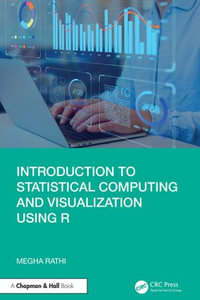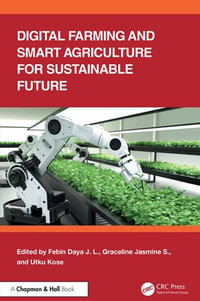
eTEXT
Mastering Computer Vision with TensorFlow 2.x
Build advanced computer vision applications using machine learning and deep learning techniques
By: Krishnendu Kar
eText | 15 May 2020 | Edition Number 1
At a Glance
eText
$57.19
OR
Free with Kobo Plus Read
Start Free Trial *- Subscribe and read all you want.
- $13.99 a month after free trial. Cancel Anytime. Learn more.
Instant online reading in your Booktopia eTextbook Library *
Read online on
Not downloadable to your eReader or an app
Why choose an eTextbook?
Instant Access *
Purchase and read your book immediately
Read Aloud
Listen and follow along as Bookshelf reads to you
Study Tools
Built-in study tools like highlights and more
* eTextbooks are not downloadable to your eReader or an app and can be accessed via web browsers only. You must be connected to the internet and have no technical issues with your device or browser that could prevent the eTextbook from operating.
Apply neural network architectures to build state-of-the-art computer vision applications using the Python programming language
Key Features
- Gain a fundamental understanding of advanced computer vision and neural network models in use today
- Cover tasks such as low-level vision, image classification, and object detection
- Develop deep learning models on cloud platforms and optimize them using TensorFlow Lite and the OpenVINO toolkit
Book Description
Computer vision allows machines to gain human-level understanding to visualize, process, and analyze images and videos. This book focuses on using TensorFlow to help you learn advanced computer vision tasks such as image acquisition, processing, and analysis. You'll start with the key principles of computer vision and deep learning to build a solid foundation, before covering neural network architectures and understanding how they work rather than using them as a black box. Next, you'll explore architectures such as VGG, ResNet, Inception, R-CNN, SSD, YOLO, and MobileNet. As you advance, you'll learn to use visual search methods using transfer learning. You'll also cover advanced computer vision concepts such as semantic segmentation, image inpainting with GAN's, object tracking, video segmentation, and action recognition. Later, the book focuses on how machine learning and deep learning concepts can be used to perform tasks such as edge detection and face recognition. You'll then discover how to develop powerful neural network models on your PC and on various cloud platforms. Finally, you'll learn to perform model optimization methods to deploy models on edge devices for real-time inference. By the end of this book, you'll have a solid understanding of computer vision and be able to confidently develop models to automate tasks.
What you will learn
- Explore methods of feature extraction and image retrieval and visualize different layers of the neural network model
- Use TensorFlow for various visual search methods for real-world scenarios
- Build neural networks or adjust parameters to optimize the performance of models
- Understand TensorFlow DeepLab to perform semantic segmentation on images and DCGAN for image inpainting
- Evaluate your model and optimize and integrate it into your application to operate at scale
- Get up to speed with techniques for performing manual and automated image annotation
Who this book is for
This book is for computer vision professionals, image processing professionals, machine learning engineers and AI developers who have some knowledge of machine learning and deep learning and want to build expert-level computer vision applications. In addition to familiarity with TensorFlow, Python knowledge will be required to get started with this book.
Read online on
ISBN: 9781838826932
ISBN-10: 1838826939
Published: 15th May 2020
Format: ePUB
Language: English
Publisher: Packt Publishing
Edition Number: 1
You Can Find This eBook In
This product is categorised by
- Non-FictionComputing & I.T.Computer ScienceArtificial IntelligenceComputer Vision
- Non-FictionComputing & I.T.Computer ScienceMathematical Theory of Computation
- Non-FictionComputing & I.T.Computer ScienceArtificial IntelligenceMachine Learning
- Non-FictionComputing & I.T.Computer ScienceArtificial IntelligencePattern Recognition
- Non-FictionMathematics
- Non-FictionComputing & I.T.Computer ScienceImage Processing























